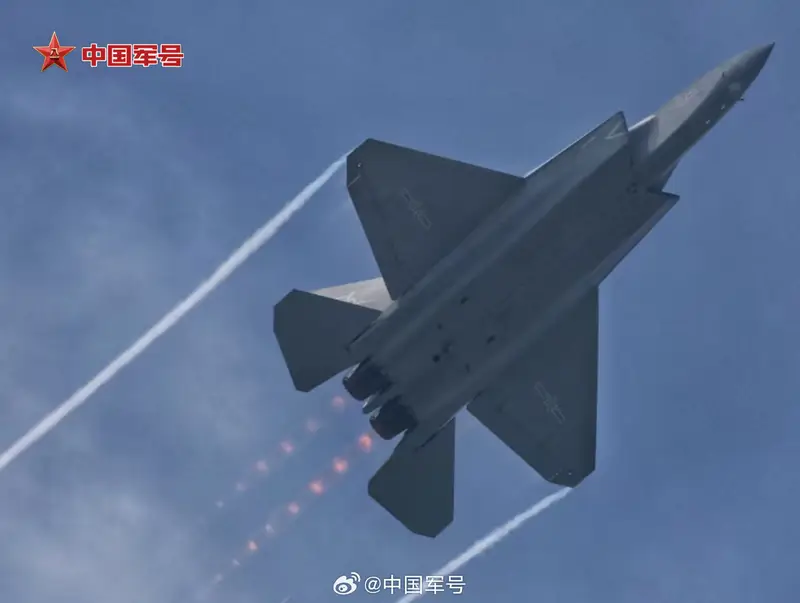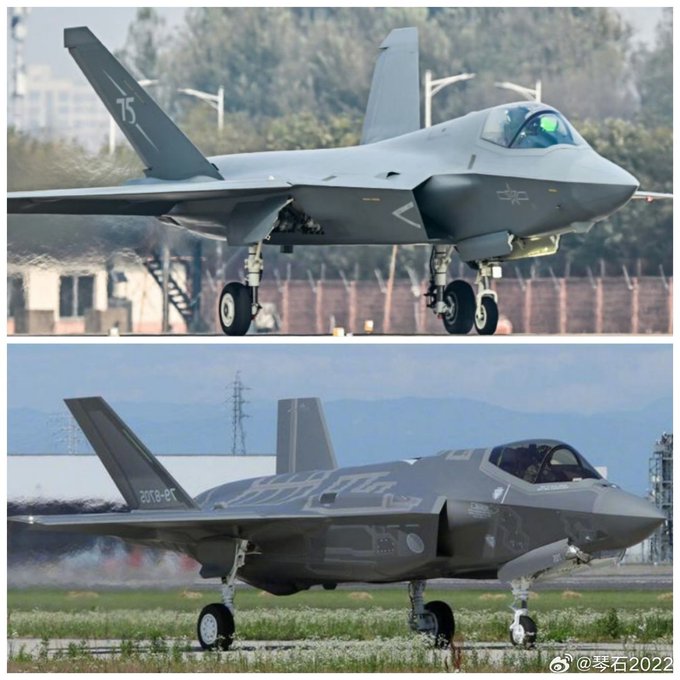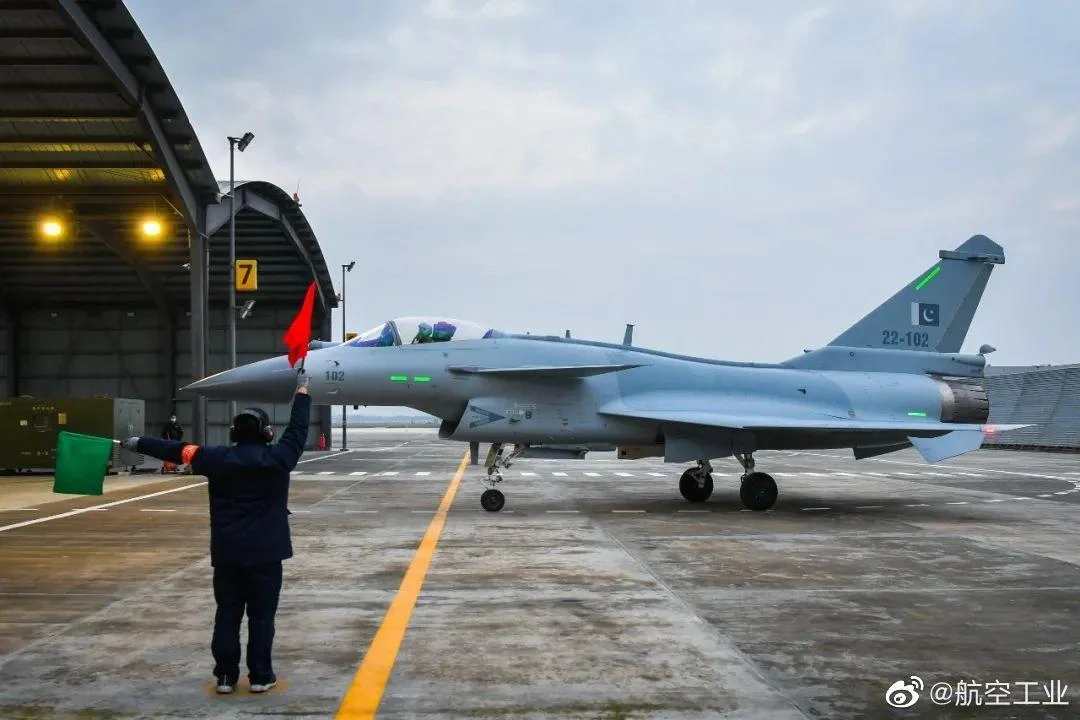Fifth-Gen Game Changer: China Accelerates J-35A Transfer to Pakistan in Dramatic Shift to Regional Power Balance
According to retired PAF Air Commodore Zia Ul Haque Shamshi, the arrival of the J-35A fleet will provide Pakistan with a “12 to 14-year” advantage in stealth fighter capabilities compared to India’s current air inventory.
(DEFENCE SECURITY ASIA) — Pakistan’s landmark decision to acquire up to 40 units of the Chinese fifth-generation stealth fighter J-35A signals a tectonic shift in South Asia’s airpower calculus, positioning the Pakistan Air Force (PAF) on a trajectory to outpace its long-time rival India for over a decade.
According to retired PAF Air Commodore Zia Ul Haque Shamshi, the arrival of the J-35A fleet will provide Pakistan with a “12 to 14-year” advantage in stealth fighter capabilities compared to India’s current air inventory.
“India is not expected to field a fifth-generation combat aircraft during that timeframe, which grants Pakistan a strategic advantage in the region,” he said, emphasizing the operational vacuum India may face.
The J-35A, developed by Shenyang Aircraft Corporation, is China’s second fifth-generation stealth fighter after the J-20 “Mighty Dragon,” but unlike the J-20, it is tailored for export to key partners like Pakistan.
The PAF first indicated interest in the J-35A last year, with Pakistan Air Chief Marshal Zaheer Ahmed Baber Sidhu declaring at a formal engagement that the stealth platform would soon join the PAF’s inventory.
“Negotiations for the procurement of the J-35A have been held, and the fighter will become part of the Pakistan Air Force in the near future,” said the air chief, hinting at a fast-tracked induction timeline.
Recent report also indicated that Beijing is reportedly accelerating the delivery schedule of J-35A, with initial aircraft potentially arriving in Pakistan as early as 2025—far earlier than the original two-year timeframe previously speculated.

This urgency reflects China’s growing strategic alignment with Pakistan amid increasing Indo-Pacific tensions, and underscores its intent to counterbalance India’s growing military ties with the United States and France.
Multiple reports have confirmed that Pakistan has already dispatched its first cadre of fighter pilots to China to commence training on the J-35A platform, a clear indicator of the deal’s advancement beyond just planning stages.
The J-35A’s stealth profile, advanced avionics, internal weapons bays, and likely network-centric capabilities make it a force multiplier designed to penetrate contested airspace and carry out precision strike and air superiority missions.
While the J-20 remains China’s crown jewel in stealth technology, its export has been prohibited due to concerns over technological leakage—mirroring the U.S. policy of restricting F-22 Raptor exports—thereby making the J-35A China’s flagship stealth export fighter.
The aircraft is believed to be a carrier-capable design, likely intended for operations aboard China’s next-generation aircraft carriers, placing it in the same class as America’s F-35C and F-35B variants.
With an estimated maximum takeoff weight (MTOW) now increased to 28,000 kg and powered by twin WS-19 engines with 12 tonnes of thrust each, the J-35A is expected to deliver formidable performance at both high and low altitude.

Each of its two internal bays is capable of housing two medium-range air-to-air missiles, such as the PL-15, providing a stealth-compliant armament profile while maintaining a low radar cross-section.
The aircraft also features multiple external hardpoints that can be used for mounting precision-guided munitions, anti-ship missiles, and tactical strike weapons, depending on mission configuration.
The introduction of the J-35A is expected to eventually phase out Pakistan’s aging fleet of F-16s and Mirage 5s, replacing them with a platform that offers next-generation survivability, lethality, and sensor fusion.
Pakistan’s stealth leap comes as India continues to rely on 4.5-generation fighters such as the Su-30MKI and Rafale, both potent platforms but lacking stealth capability and true fifth-gen systems integration.
With China operating the J-20 and Pakistan set to field the J-35A, India faces a possible two-front airpower asymmetry, raising serious concerns within its defence establishment.
The shift could force India to expedite its stalled Advanced Medium Combat Aircraft (AMCA) program or seek external fifth-gen solutions—though none are currently available from either the U.S. or Russia in the export market.

Pakistan’s acquisition of the J-35A not only strengthens its deterrence posture vis-à-vis India but also reflects China’s broader ambitions to establish a foothold in the global stealth fighter market amid tightening Western export controls.
China has even established a dedicated export office to market the J-35A to potential international buyers—an unprecedented move in Beijing’s military aviation diplomacy.
Unlike the J-20, which remains exclusive to the PLAAF, the J-35A is China’s answer to the F-35 in terms of affordability, multirole versatility, and power projection through allied networks.
For Pakistan, the J-35A is more than a fighter—it is a symbol of technological parity, geopolitical signalling, and future air doctrine transformation, allowing it to conduct deeper, deadlier, and stealthier operations in a high-threat environment.
The J-35A’s induction will mark not just a technological upgrade, but a strategic realignment in South Asia’s airpower balance, with ramifications for conflict escalation, deterrence dynamics, and regional arms races in the Indo-Pacific theatre.


As of May 2025, the Pakistan Air Force (PAF) maintains a robust and diverse fleet, reflecting its strategic partnerships and evolving defense needs. The PAF operates approximately 1,399 aircraft, positioning it as the seventh-largest air force globally in terms of fleet size.
Combat Aircraft:
-
JF-17 Thunder: The backbone of the PAF, with around 156 units across Block I, II, and III variants. The Block III introduces advanced avionics and AESA radar systems.
-
F-16 Fighting Falcon: Approximately 75 aircraft, including Block 15 MLU and Block 52+ variants, serving in multirole capacities.
-
J-10C Vigorous Dragon: Around 20 units of this Chinese multirole fighter have been inducted, enhancing the PAF’s air superiority capabilities.
-
Mirage III and Mirage 5: A combined total of over 130 aircraft, many upgraded under Project ROSE, continue to serve in strike and reconnaissance roles.
-
F-7PG: Approximately 53 units remain in service, primarily as interceptors.
Support and Special Mission Aircraft:
-
Airborne Early Warning & Control (AEW&C): The PAF operates Saab 2000 Erieye and ZDK-03 Karakoram Eagle platforms to enhance situational awareness.
-
Aerial Refueling: Four Ilyushin Il-78MP aircraft provide in-flight refueling capabilities, extending the operational range of combat aircraft.
-
Transport Aircraft: The fleet includes C-130 Hercules, Saab 2000, and other utility aircraft for logistical support.
Unmanned Aerial Vehicles (UAVs):
-
Combat UAVs: The PAF employs various UCAVs, including the indigenous Burraq, Turkish Bayraktar TB2 and Akıncı, and Chinese Wing Loong II, enhancing its strike and reconnaissance capabilities.
Training Aircraft:
-
Basic and Advanced Trainers: Training platforms include the MFI-17 Mushshak, K-8 Karakorum, and T-37 Tweet, ensuring pilot proficiency across various flight regimes.
— DEFENCE SECURITY ASIA



Pakistan Zindabad
Now, countries around the world will provide their new jets to Pakistan for battle testing against India, in order to boost their jet manufacturing industries.
This is true PAF out classed Indian air force and PAF air superiority is bright sun shine of Pakistan pilots and Chinese technology. But still I will say war is not good for anyone. We want peace in the world and especially work for for the welfare of our masses. We also want to work for the freedom our Kashmiris and believe without the revolving dispute of Kashmir lasting peace is not possible. Let’s settle Kashmir dispute once for all.
India have technology to detect stealthy surface.
Looks gorgeous and it will indeed help Pakistan greatly
Yograj Singh ji, I am saying for everyone that VICTORY HAS A THOUSAND FATHERS AND DEFEAT IS AN ORPHAN. Today India lost 6 fighter aircrafts and there are all kind of bashings from everybody on India. The results of battles/wars keep on changing. It is matter of time. Both neighbours should understand that war is not in the interest of either of them. Over a billion and a half people are living in this region. And majority of them are living in miserable conditions. Together both countries can co-exist in peace and improve their respective societies.